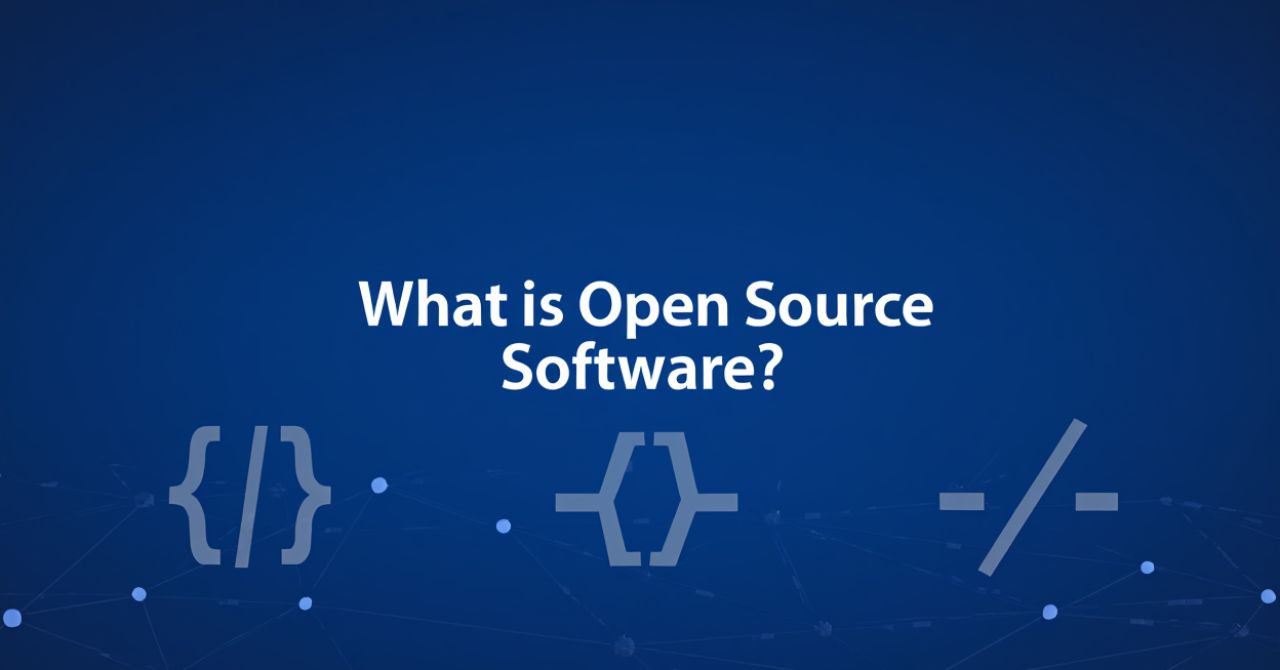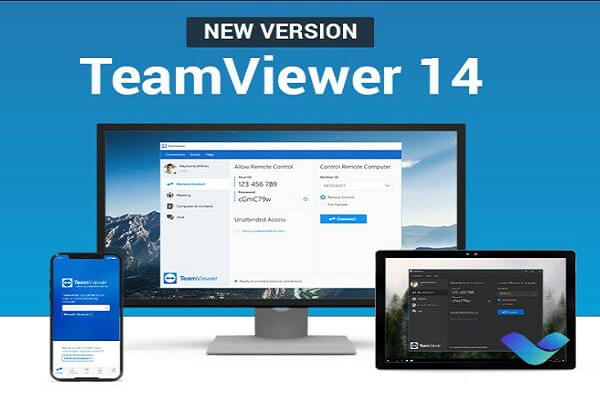What Is Open Source Software? Simply put, it’s software whose source code is made freely available for anyone to view, modify, and improve. Unlike proprietary software, where the inner workings remain hidden, open source promotes transparency, collaboration, and user empowerment.
In today’s digital world, open source software powers everything from mobile phones to enterprise servers, with iconic projects like Linux, Firefox, Android, and LibreOffice leading the way. This 2025 guide from Softbuzz will help you understand what open source software truly means, how it works, why it matters, and how you can benefit from or contribute to this global movement.
1. What is Open Source Software?
Open source software is software with source code that anyone can inspect, modify, and enhance. The term “open” means the source code is publicly accessible, allowing users to understand how the software works and to adapt it to their needs. This openness grants rights that proprietary or closed-source software does not, such as the freedom to improve the software or share it with others.
Think of open source software like a publicly shared recipe: anyone can view how it’s made, adjust the ingredients, or share their own version. In contrast, proprietary software is like a secret recipe owned by a company, accessible only to select individuals under restrictive licenses.
This fundamental difference reshapes development dynamics, fostering community-driven innovation instead of isolated, vendor-controlled solutions. Understanding this sets the stage for exploring the core philosophies and legal frameworks underpinning open source software.
2. Key Principles and Philosophies of Open Source
The heart of open source software lies in its guiding freedoms and community ethos. Here are the key principles:
- The Open Source Definition (OSD): Defined by the Open Source Initiative (OSI), these include the freedom to use the software for any purpose, study how it works, modify it to suit your needs, and redistribute original or modified versions.
- The Four Essential Freedoms (Often associated with Free Software): Open source promotes complete visibility into the code, which encourages trust, security, and collaborative troubleshooting.
- Community and Collaboration: Development is driven by diverse global contributors who share knowledge, review code, and innovate collectively.
- Meritocracy: Contributions are evaluated on quality and impact, not on corporate hierarchy, creating a democratic development environment.
- Open Development Ethos: Projects often maintain open communication channels, public roadmaps, and inclusive governance structures, as emphasized in the GNU Manifesto and endorsed by the Open Source Initiative (OSI).
These philosophies do more than guide; they foster sustainable ecosystems where software evolves quickly and trusts are built across users and developers alike.
How Does Open Source Software Work?
Open source software development thrives on collaborative workflows and modern tools. Here’s a typical process:
- Community-Driven Development: Anyone can contribute—from bug fixes to new features. Contributors submit their changes for review.
- Maintainers: Trusted individuals or teams oversee project quality, merging changes, and ensuring coherence.
- Review and Peer Feedback: Changes are peer-reviewed to maintain code quality, security, and alignment with project goals.
- Version Control Systems: Tools like Git track every change, allowing developers to work in parallel without conflicts.
- Code Hosting Platforms: Services such as GitHub and GitLab provide central repositories, issue tracking, and collaboration spaces.
- Contribution Workflow: Typically involves forking the project, making changes, then submitting a pull request for maintainers’ review and integration.
For example, the Linux kernel project employs thousands of contributors globally who submit patches that are rigorously reviewed before inclusion. This decentralized yet structured approach ensures both innovation and reliability.
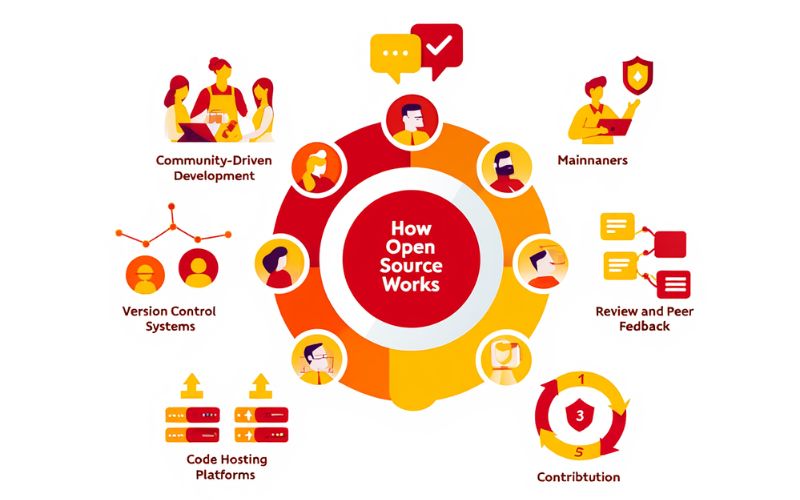
3. Open Source Licenses Explained
An open source license legally defines what users can and cannot do with the software. It’s essential because without clear licensing, the openness has no formal protection or guidelines.
Here’s a comparative table of popular open source licenses:
License Comparison Table
GPL (GNU General Public License): Copyleft license requiring derivative works to remain open source. Used by Linux and WordPress.
MIT License: A permissive license allowing nearly unrestricted reuse and distribution, often in proprietary products. Used by Ruby on Rails and jQuery.
Apache License 2.0: Permissive with explicit patent grants, offering legal clarity. Used by Apache projects and Kubernetes.
BSD License: A permissive license similar to MIT but with slight variations in terms. Used by FreeBSD and PostgreSQL.
“Copyleft” licenses like GPL enforce openness downstream, ensuring modifications stay open. “Permissive” licenses like MIT allow proprietary forks and redistribution with minimal restrictions.
License compliance and compatibility are crucial for integrating different open source components securely and legally—as seen in large projects that carefully manage dependencies.
4. 30+ Benefits of Open Source Software (for Users, Businesses, Developers)
Open source software offers extensive benefits tailored to various audiences.
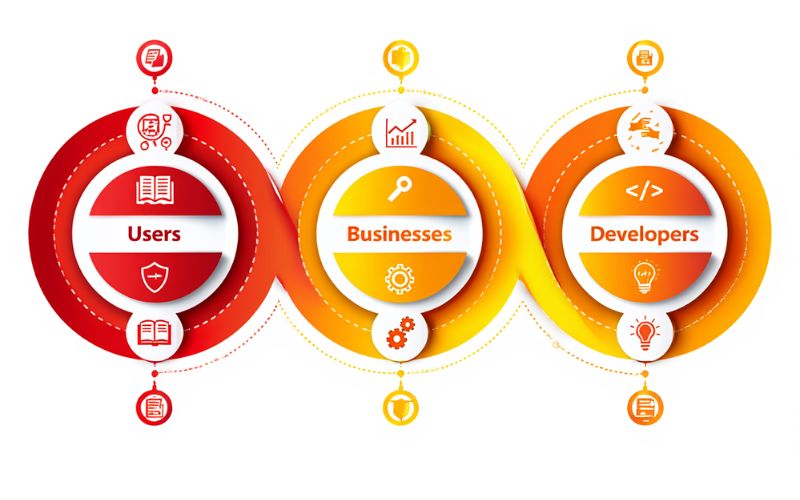
For Individual Users:
- Cost Savings: No licensing fees reduce software expenses.
- Privacy and Control: Visibility into the code prevents hidden data collection.
- Customization: Modify software to fit personal needs or preferences.
For Businesses and Organizations:
- No Vendor Lock-In: Freedom to switch providers or modify software avoids dependency.
- Transparency: Open code enhances security audits and trust.
- Economic Efficiency: Lower total cost of ownership through community-driven maintenance.
For Developers:
- Learning Opportunities: Access to real-world codebases accelerates skill development.
- Reputation Building: Contributions can enhance professional profiles.
- Innovation Environment: Collaborative platforms spur creative solutions.
Community and Societal Impacts:
- Trust: Transparency builds confidence among users and regulators.
- Security: Community scrutiny identifies vulnerabilities faster.
- Standards Adoption: Open standards foster interoperability and competition.
Surveys like GitHub Octoverse report millions of active contributors globally, while public sector case studies reveal cost-effective, secure deployments using open source. Softbuzz continues to champion these benefits by providing detailed guides and usage insights.
5. Drawbacks and Challenges of Open Source Software
While powerful, open source software also faces some challenges:
- Technical: Documentation quality varies; professional support can be limited compared to commercial offerings.
- Business: Complex integration, potential hidden costs in maintenance, and license compliance risks.
- Community/User: Fragmentation across forks can confuse users; inconsistent quality assurance depending on project maturity.
Notable examples include high-profile security vulnerabilities in poorly maintained libraries and failed projects lacking sustainable governance. Awareness of these challenges is key to informed adoption and effective participation.
6. Examples of Popular Open Source Software in 2025
Open source dominates many software categories:
- Operating Systems: Linux (server and desktop), Android (mobile platform).
- Browsers: Firefox and Chromium (the basis for Chrome and Edge).
- Productivity Suites: LibreOffice (document editing), GIMP (raster image editor).
- Web Development and Databases: WordPress (content management), MySQL and PostgreSQL (databases), Docker and Kubernetes (containerization and orchestration), Python (programming language).
These projects power billions of devices and web applications worldwide. Download stats, enterprise adoption, and developer activity underscore their global impact. Softbuzz offers detailed walkthroughs for many such tools.
7. How to Get Started with Open Source (Users & Contributors)
For Users:
- Discover Alternatives: Use trusted portals and Softbuzz resources to find open source software suited to your needs.
- Evaluate and Vet: Check community activity, update frequency, and reviews to ensure reliability.
- Installation: Follow user-friendly guides and documentation.
For New Contributors:
- Learn the Basics: Understand version control (Git), coding standards, and project contribution guidelines.
- Start Small: Fix minor bugs or improve documentation to gain confidence.
- Join Communities: Engage in forums, mailing lists, or chat groups to seek help and collaborate.
- Submit Your First Pull Request: Follow etiquette and template instructions; many projects offer “good first issues” labels to help beginners.
Success stories from first-time contributors abound, and Softbuzz provides curated tutorials and mentorship links to ease your journey.
8. The Future & Sustainability of Open Source
As we advance beyond 2025, open source software faces exciting trends and sustainability challenges:
- Emerging Areas: AI and machine learning projects (e.g., TensorFlow), blockchain platforms, open hardware initiatives, and securing software supply chains.
- Funding Models: Growing reliance on platforms like OpenCollective and GitHub Sponsors to financially support maintainers.
- Governance: Balancing corporate involvement with grassroots community leadership to maintain diversity and innovation.
Major tech companies continue releasing crucial open source tools while new funding avenues emerge to address burnout and resource gaps. These developments will shape open source’s trajectory, underscoring the need for community vigilance and collaboration.
9. Frequently Asked Questions about Open Source Software
- Is open source software free? Open source means free access to source code and freedoms to use or modify it, but not always free of cost—some services or support may require payment.
- What’s the difference between open source and freeware? Freeware is free to use but usually with closed source code; open source provides access to the code and rights to modify.
- Can open source be used commercially? Yes, most open source licenses permit commercial use, with terms varying by license.
- How secure is open source software? Transparency allows many eyes to find vulnerabilities quickly, often making it more secure, though quality can vary.
- How does open source compare to proprietary software? Open source emphasizes freedom, collaboration, and transparency, while proprietary software is controlled by vendors with restricted access and modification rights.
These answers aim to clarify common uncertainties and reflect industry consensus informed by developer advocacy and surveys.
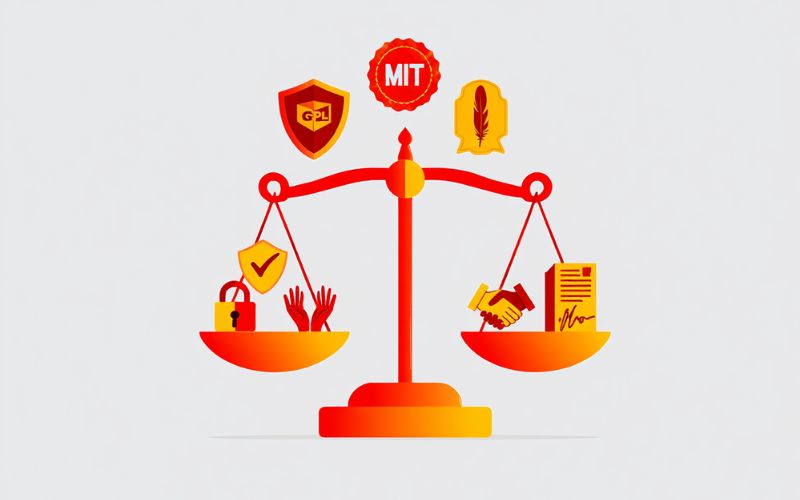
More than:
- What is BIOS? Everything You Need to Know
- What Is Timeboxing in Productivity Software? A Complete Guide
10. Conclusion
What Is Open Source Software? It’s more than just freely available code—it’s a transformative force reshaping how technology is built, shared, and improved. By embracing principles of transparency, community collaboration, and freedom to innovate, open source software empowers individuals, businesses, and developers alike.
Understanding what open source software truly means, from its foundational philosophies and licensing models to its real-world benefits and challenges, helps unlock its full potential. As the ecosystem evolves through community support and sustainable development, it continues to drive innovation across industries.
Whether you’re discovering open source alternatives, contributing to a global project, or integrating open source into your business strategy, staying engaged is essential. At Softbuzz, we remain committed to helping you explore what open source software represents in 2025 and beyond, guiding you with insights, tools, and practical knowledge to thrive in the open digital age.

